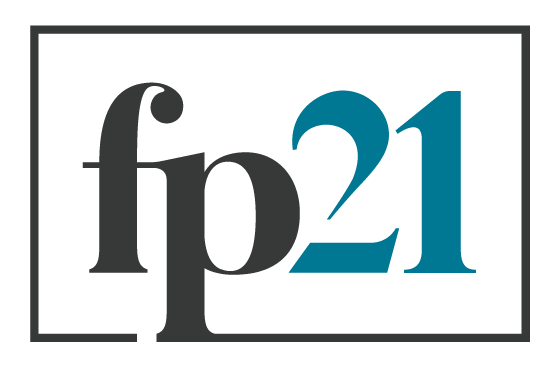Pandemic Politics: Rebuilding diplomacy for a post-COVID-19 world
By Ryan Dukeman, August 12, 2020
Originally published in the International Affairs Blog on Medium
Image Credit: New York National Guard via Flickr.
The pandemic’s geopolitical fallout presents a generational test for American diplomacy — it faces at once the biggest shock to the international order since the fall of the Soviet Union, the worst domestic crisis since the Second World War, and a fault-line in US–Chinese strategic competition. Yet after nearly four years of institutional sabotage by the Trump administration, the United States’ State Department has never been in so weak a position to meet this challenge. It now faces repeated 30 per cent budget cut proposals, the loss of nearly 60 per cent of its career ambassadors, and the fewest applications to join the foreign service in over a decade. As one retired ambassador said of former Secretary Rex Tillerson’s disastrous ‘redesign’, ‘if you wanted to actually set out to break American diplomacy, this is how you’d do it’.
A Biden administration hoping to put the US back in the ‘driver’s seat’ of international politics, then, would quickly find out its car has no engine. As such, rebuilding American diplomacy must itself be a foreign policy priority if the United States is to lead the post-COVID-19 world. In order to do so, these four areas should form the core of this effort: focusing on data-driven policy-making, valuing expertise and debate, building a diverse workforce and tying change to the State Department’s mission.
Advanced analytics
In my time with the US State Department’s Center for Analytics, I saw first-hand how senior leaders and working-level diplomats benefited from data-informed decision-making across a variety of topics. Far from a threat to automate diplomats, advanced analytics is an important and growing component of a modern diplomatic force. Yet for the State Department to fully capitalize on the data revolution, it will need to equip its employees with the tools to do so. This means more structured information collection abroad, including putting a premium on survey and data-collection platforms, and investing in robust, interactive and transparent analytic products in Washington. This will provide rapid insight for senior leaders, allow the State Department to pick up on patterns human analysts might miss, give diplomats greater context for their day-to-day missions and make to easier to track what is working and what is not. Examples could include leveraging structural topic modeling on diplomatic cables to understand patterns of state behaviour and bringing the US State Department up to speed with peer agencies’ strategic-planning exercises by using quantitative scenario modeling.
The US State Department should also retool the types of skills and qualifications it values when thinking about what makes a diplomat in the twenty-first century. Traditionally, the US State Department has prized generalist area- or international-studies backgrounds. By combining such traditional diplomatic expertise with smart uses of technology, the State Department can position America’s diplomats as first among inter-agency equals in producing insightful policy analyses in line with US strategic goals.
Encouraging specialization and debate
The pandemic has made it more obvious that the State Department’s generalist culture and primarily regionally-based bureaucratic structure are ill-equipped to handle a specialists’ world in which the technical details of climate insecurity, artificial intelligence or indeed pandemics matter as much as country-specific language and area expertise. The State Department’s regional bureaus — with embassies, staff and clear jurisdictional lines — will likely always be its powerhouses. Yet the accelerated proliferation of special envoys in recent years demonstrates that the deficiencies of status-quo policy-making structures in addressing cross-functional challenges were already appearing.
The US State Department would do well to learn from USAID’s more specialist culture and hiring priorities: there, expertise in development economics, agriculture, or democratic institutions is core to the mission, and hiring practices reflect those needs. Civil servants in the State Department’s headquarters would similarly benefit from increased mid-career lateral hiring authority, and greater ease and incentive for existing employees to ‘extern’ with other government agencies, technology companies or NGOs.
Relatedly, the US State Department should encourage information-sharing and differences of opinion by replacing its ‘clearance process’ with a ‘comments process’. This would remedy the highly-politicized process that too often produces least-common-denominator proposals — often disfavoured by the White House and the State Department’s leaders alike — designed to appease all bureaus, a particularly common occurrence on cross-national topics.
A diverse workforce
It is clear that these changes require a larger, more diverse, and differently-skilled diplomatic corps than currently exists. To end the structural racism in the US State Department’s persistently homogeneous workforce, congress should create a diplomatic equivalent to Reserve Officers’ Training Corps, moving away from the foreign service’s ‘pale, male and Yale’ heritage.
Today, most incoming foreign service officers in the US have a master’s degree, often from institutions like the Harvard Kennedy School or Johns Hopkins SAIS. Instead of requiring those interested in diplomacy to take this expensive leap, the State Department should pay for aspiring diplomats’ college education, and then incentivize and subsidize ongoing training throughout their careers. Doing so would go a long way in recruiting a more diverse diplomatic corps, while giving the State Department more say over the type of qualifications it wants to prioritize.
Making change stick
Of course, none of these ideas will do any good if attempts to implement them fail. In order to make the next administration’s reform agenda successful, leaders should first tie reform to an empowering, substantive mission so that career staff understand reform is foundational to achieving their and the department’s goals. Reforms should also prioritize incentives, decision-making processes, and hiring and promotional criteria over contentious, failure-prone reshuffling of organizational charts. Third, reforms should leverage existing recommendations from the US Government Accountability Office and US Office of the Inspector General for quick wins that tangibly improve the employee and citizen experience, while pleasing overseers in congress whose support is needed for more ambitious changes.
The pandemic has made the need to rebuild American diplomacy crystal clear, but these efforts should not aim for a pre-Trump status quo that also under-performed. Instead, to meet the needs of diplomacy’s future, reformers should focus on equipping diplomats with the analytical savvy, policy-making structures and human capital investments needed to predict and navigate an increasingly transnational world.
Ryan Dukeman is a PhD student in international relations and American government at Princeton University. He researches the history and politics of institutional reform in US foreign policy. He is also a founding member and senior fellow at Foreign Policy 2021, a new think-tank aimed at transforming the processes and institutions of American diplomacy.
In August, International Affairs has teamed up with the Future Strategy Forum for the ‘Pandemic Politics’ series on US politics and the COVID-19 pandemic. This series is made possible by The Center for Strategic and International Studies (CSIS), the Henry A. Kissinger Center for Global Affairs at the Johns Hopkins School of Advanced International Studies (SAIS) and the Bridging the Gap Project (BtG).


